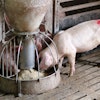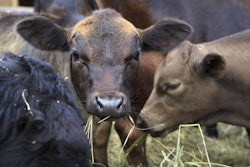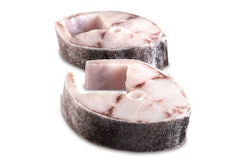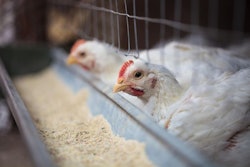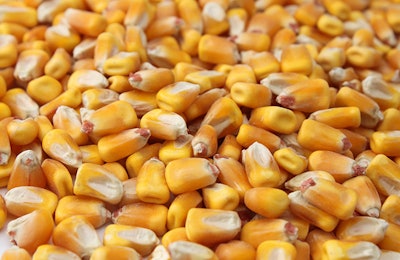
Inclement weather and rising grain prices have caused interest in corn to skyrocket among animal feed manufacturers in the U.K.
Imports and use of corn have been growing in the U.K. for several years now, according to Peter Collier, an analyst with the Agriculture and Horticulture Development Board’s cereals and oilseeds division. But last fall saw an unprecedented spike, with feed manufacturers increasing their use of corn by more than 53.3 percent over fall 2017, according to data from AHDB.
Oats also saw a dramatic 60.7 percent increase in use, but the overall proportion of oats in U.K. feeds remain low — less than 1 percent of total cereal use. Corn, on the other hand, now represents more than three percent of the total cereals used in animal feeds in the U.K. Wheat continues to be the most common cereal ingredient in the U.K., according to AHDB.
Weather and economic factors have been the driving force behind the U.K. feed industry’s sudden adoption of corn. Spring 2018 was abnormally cold and wet, Collier said, which delayed the planting of domestic cereals in the U.K. and across northern Europe. The dry, hot summer that followed resulted in low crop yields and sent prices for wheat and barley skyward — prices for domestic wheat increased some 27 percent over the course of 2018, according to AHDB data, while prices for imported corn increased about 12 percent in the same time frame.
Corn, on the other hand, was less significantly impacted by European weather, and yields in the Black Sea region and in the Ukraine were above average, Collier said. The price differential between imports and domestic prices provided further incentive to incorporate corn in livestock diets.
But Collier doesn’t expect the upward trend to continue. Because this year’s “exceptional” volume of corn in feed is price-related, he said, he expects use to drop back down toward the end of the year. However, he said he thinks the surge in use this year would likely set a higher “baseline” of corn use in the U.K. for years to come.

